
Roofing underlayment is integral to the efficiency of the structure’s building envelope. Like below-grade barriers and house wrap, roofing underlayment protects the interior from water intrusion from the environment. When the primary roofing material fails, roofing underlayment is the last line of defense protecting the roof deck and interior of the structure.
While building codes vary from region to region, most require roofing underlayment before installing shingles. When choosing a roofing paper or synthetic underlayment product, contractors must consider the roofing material. Some products aren’t suitable for high-temperature applications (excess sun or metal roofing), while others are intended for use where ice and snow are a concern.
Ultimately, roofing underlayment prolongs the life of the roof, from the deck to the shingles. We’re getting granular about roofing underlayment to help you understand why it’s a vital component of the building envelope and how to choose the best one for any roofing application.
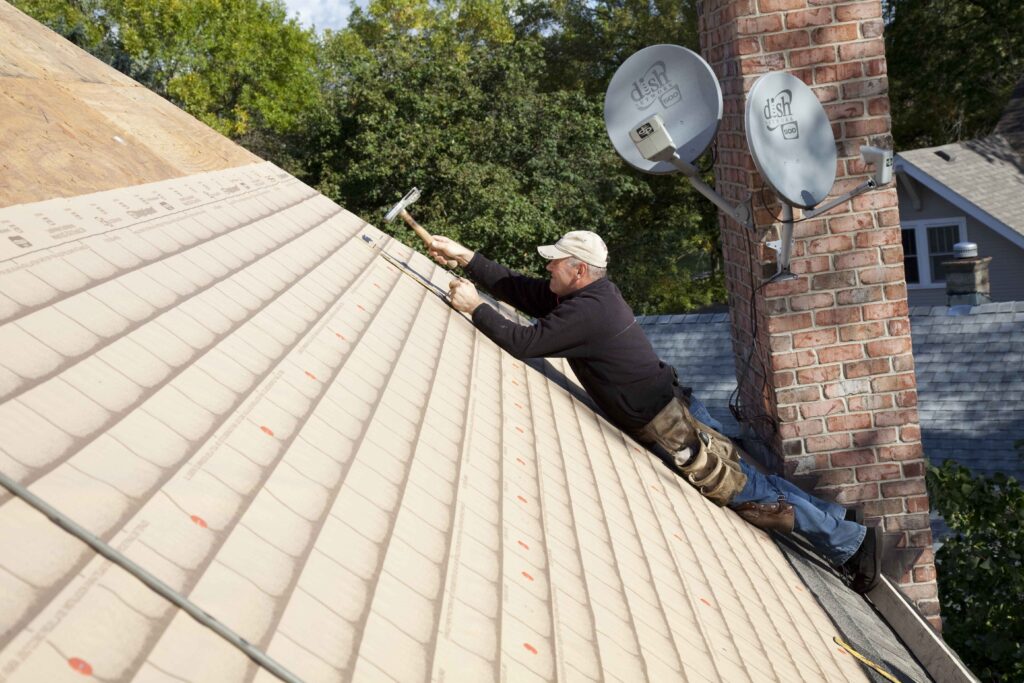
In most cases, the IBC requires roofing underlayment for asphalt shingle roofs and enhanced underlayment in low-slope or high-wind conditions. It plays a role in protecting the roof deck and also in prolonging the life of the final roofing material in extreme weather conditions.
Roofers rely on roofing underlayment to provide a secondary water-resistant barrier between shingles and the roof deck. Without it, water can easily penetrate damaged shingles, damage deck panels, or leak into the home’s interior.
Many regions require an ice and snow barrier and roofing underlayment to provide enhanced protection from moisture. Low-pitch roofs where water can pool also need enhanced protection from the elements.
If water passes through the primary layer of roofing material, underlayment forces water out to the edges of the roof deck to evaporate.
An asphalt shingle roof can last up to 50 years if installed correctly. While underlayment doesn’t protect the shingles themselves, it does help keep the roof deck in good condition. It also prevents further damage when shingles blow away in high winds or from ice dams in the winter.
New synthetic roofing products have some marked improvements over traditional methods. Asphalt-felt paper is heavy and tears easily during installation, making it less efficient than newer products. Lightweight, high-performance alternatives provide a safer surface for installers and a more durable substrate. Self-adhering products also self-seal around penetrations and reduce the need for secondary ice and water products.
As extreme weather events, from storms to high temperatures, increase, roofing underlayment becomes more critical. When high winds tear off shingles, it forms a barrier between the elements and the roof deck. In extreme heat, it helps stabilize the interior temperature.
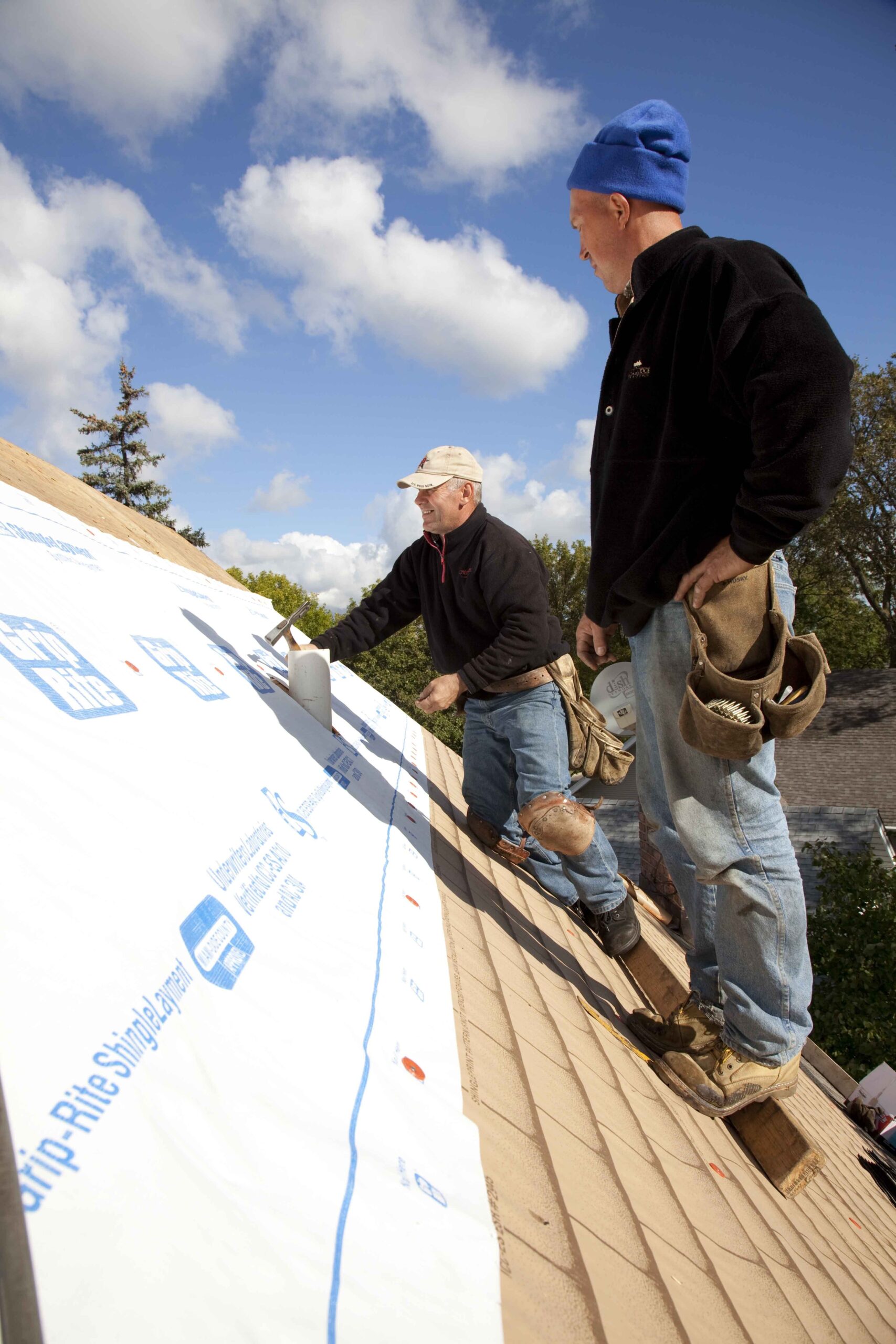
Roofing underlayment can be broken down into two categories: felt paper and synthetic products.
Felt paper is a legacy product introduced in the 19th century as a roofing solution in California. As the product evolved, it was commonly sold in #15 and #30 types for various levels of protection.
Synthetic roofing underlayment products are robust and packed with features that make them superior to felt paper. Lighter, more effective, and with future-focused engineering, they typically comprise polypropylene, silicone, and fiberglass.
Felt paper is a highly affordable option for roofing underlayment. Typically made from soaking paper or fiberglass mats with hot asphalt, it provides a vapor-permeable barrier that allows moisture to evaporate from the interior.
Also called tar paper, this product is easily torn or damaged during installation and can’t be exposed to the sun for long. Cooler temperatures make it brittle, and moisture makes the surface slick.
Synthetic roofing products perform significantly better than felt paper across the board. They are lighter and thinner, provide more coverage, and are safer to install than their traditional counterparts. Available in both mechanically attached and self-adhering forms, most can withstand up to 180 days of UV exposure without damage. With higher heat tolerances and enhanced water-shedding capacity, they’re a superior product.
Choosing the proper roofing underlayment for your project isn’t complicated. A few crucial factors can help you determine which suits your needs.
Different underlayments are designed for specific shingles: asphalt, cedar, clay, or metal. Check with your primary roofing material manufacturer to see which they recommend. Also, the pitch of your roof may require additional protection. Low-slope (>2:12) needs extra protection against ice dams and pooling.
Different climate zones require varying levels of protection against temperature and water. Dry zones may not require robust water protection but would benefit from a high-temperature synthetic for energy efficiency. Cold and wet regions need a more comprehensive moisture barrier to keep the roof deck from damage.
Conditioned attic spaces bring warm air in contact with the colder exterior, leading to condensation and potential mold or rot. Vapor-permeable underlayments allow this moisture to evaporate and keep the roof deck dry.
At Grip-Rite, we’ve engineered ShingleLayment® as your number-one solution for roofing underlayment. With top-quality components and user-friendly features that make installation fast and smooth, ShingleLayment enhances your roof’s performance throughout its lifecycle.
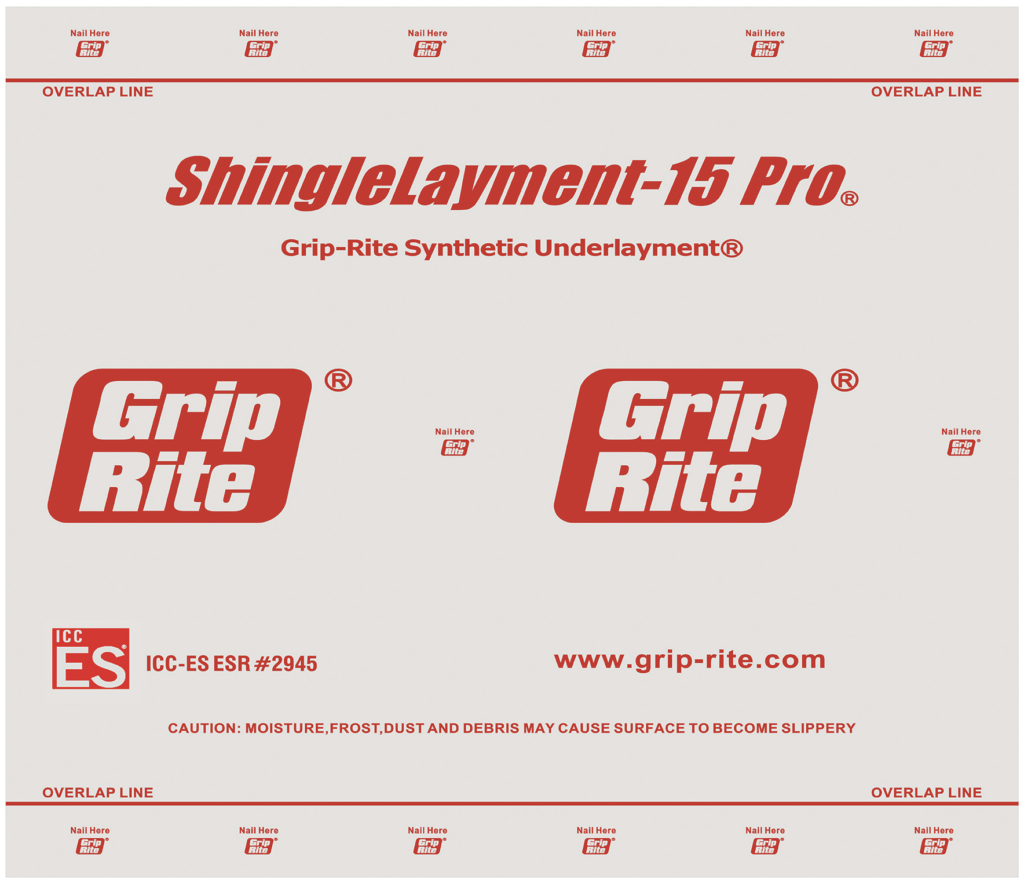
ShingleLayment-15 Pro Pro is our premium roofing underlayment for all code-compliant roofing assemblies. This product is more energy-efficient, lighter, and stronger than felt paper and is composed of a spun-bonded, non-woven polypropylene walking surface with an EVA backing. Waterproof and rated for 180 days of UV exposure, ShingleLayment-Pro stands up to the elements and protects your roof from damage.
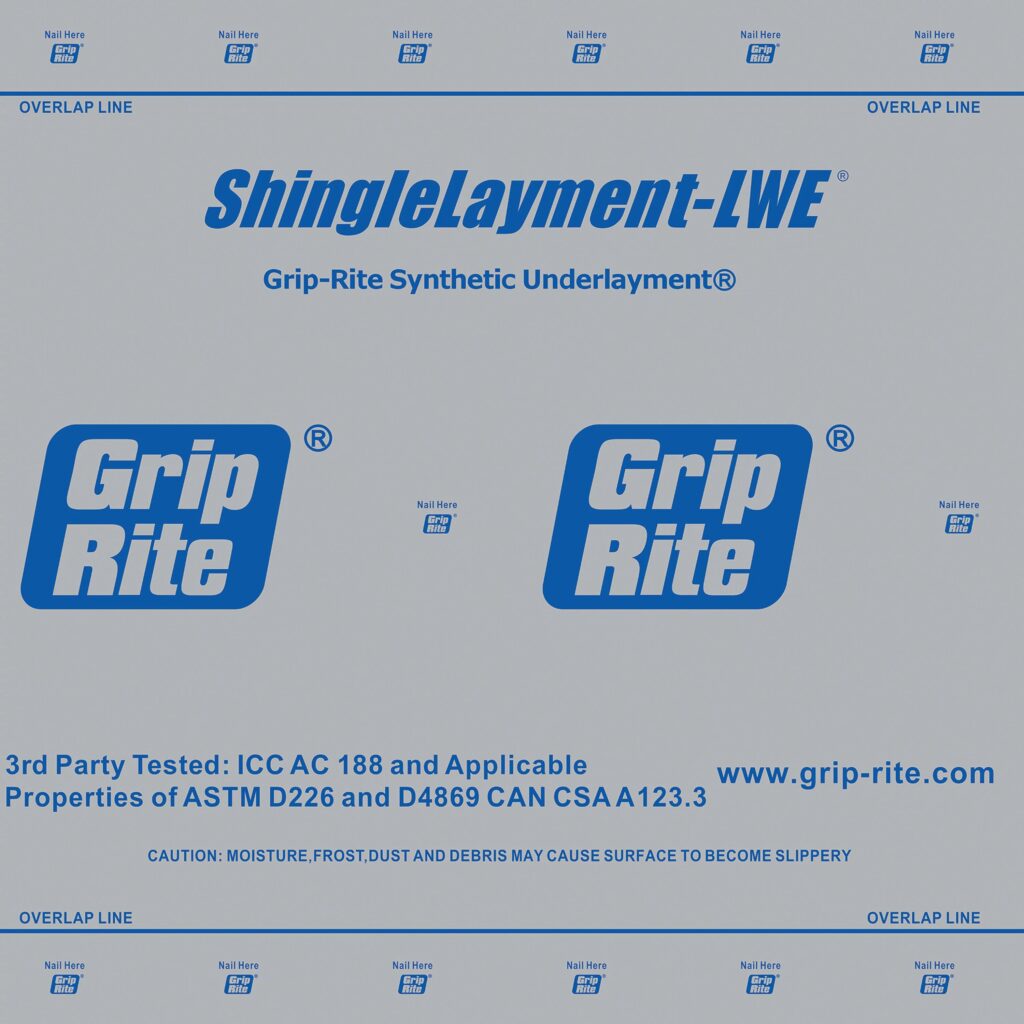
ShingleLayment-LWE is a lightweight version of ShingleLayment-15 Pro. It has a spun-bonded, non-woven polypropylene walking surface on top and bottom surfaces to help prevent slipping during installation. It’s resistant to tearing and can withstand 180 days of UV exposure. A more economical choice, ShingleLayment-LWE lays flat when unrolled and is suitable for chalk lines.
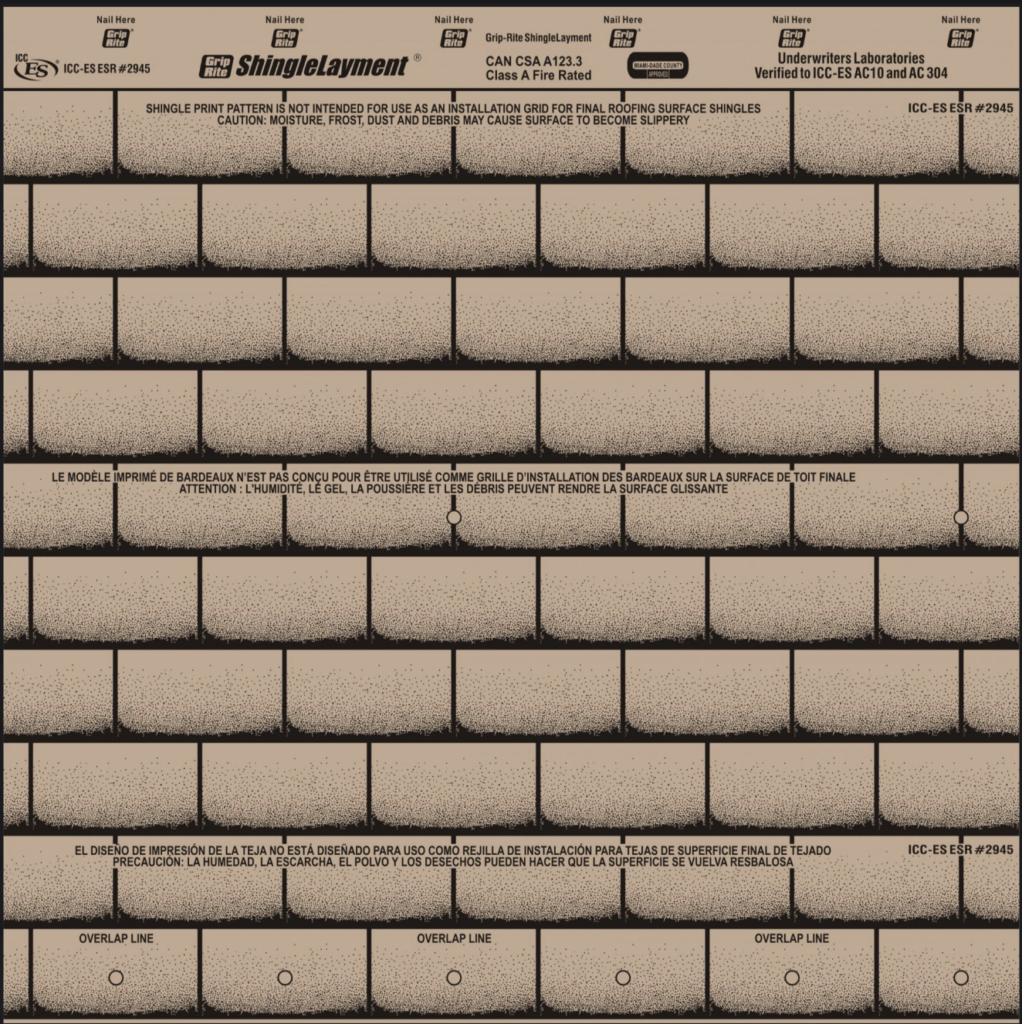
ShingleLayment Premium is a heavy-weight woven polypropylene underlayment with a spun-bonded, non-woven polypropylene walking surface. It provides enhanced water protection, is quick to install, and features a shingle print for aesthetic purposes. The product is lighter and offers more coverage than felt paper, as it is UV-resistant for up to 180 days.
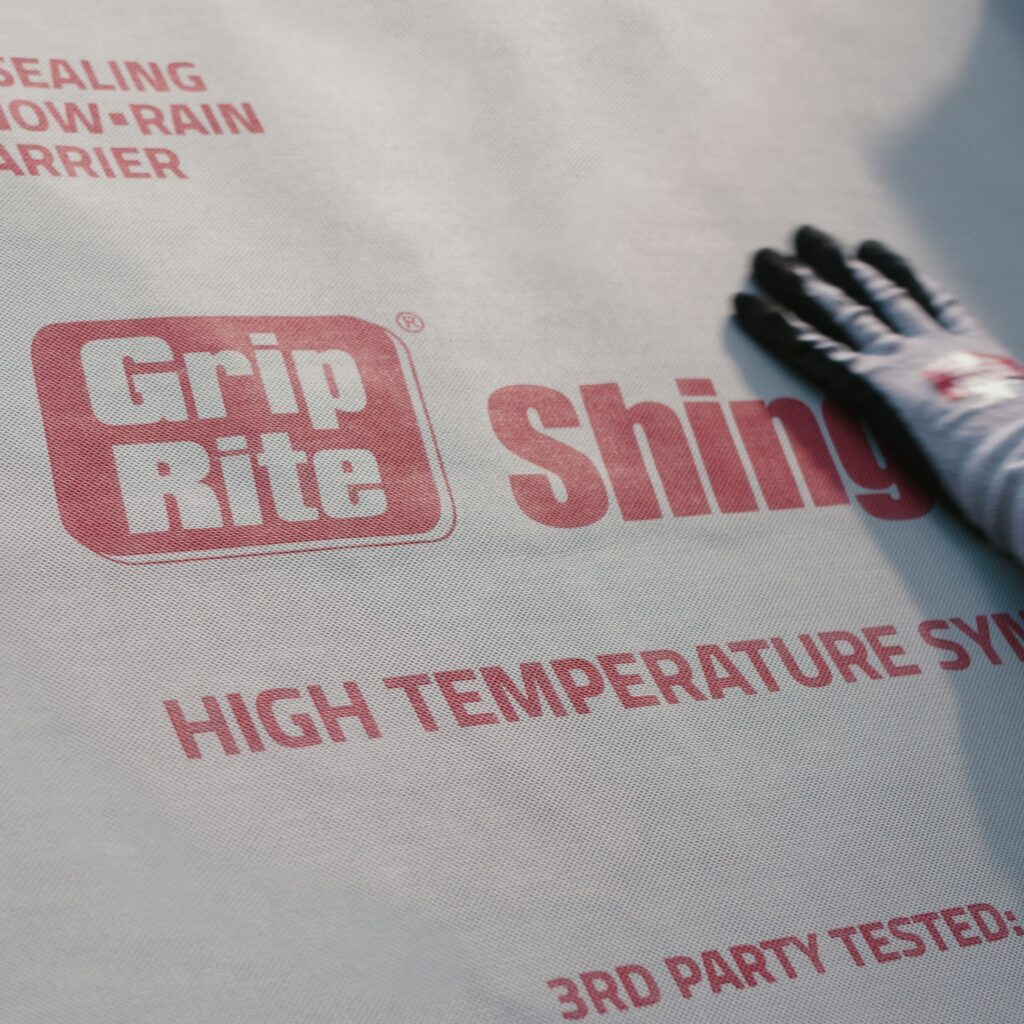
ShingleLayment-HT is a high-performance, all-synthetic roofing underlayment for high-temperature applications. It combines an eight-layer lamination with hot-melt butyl for self-sealing properties, making it ideal as a secondary water barrier in harsh climates. Suitable for use in eaves and valleys or for whole roof applications, this asphalt-free product is designed to last.
When choosing which roofing underlayment products to stock or use, Grip-Rite ShingleLayment is a strong choice. With third-party tested results and proven performance, our system has something for every application.
Find out Where to Buy Grip-Rite near you!